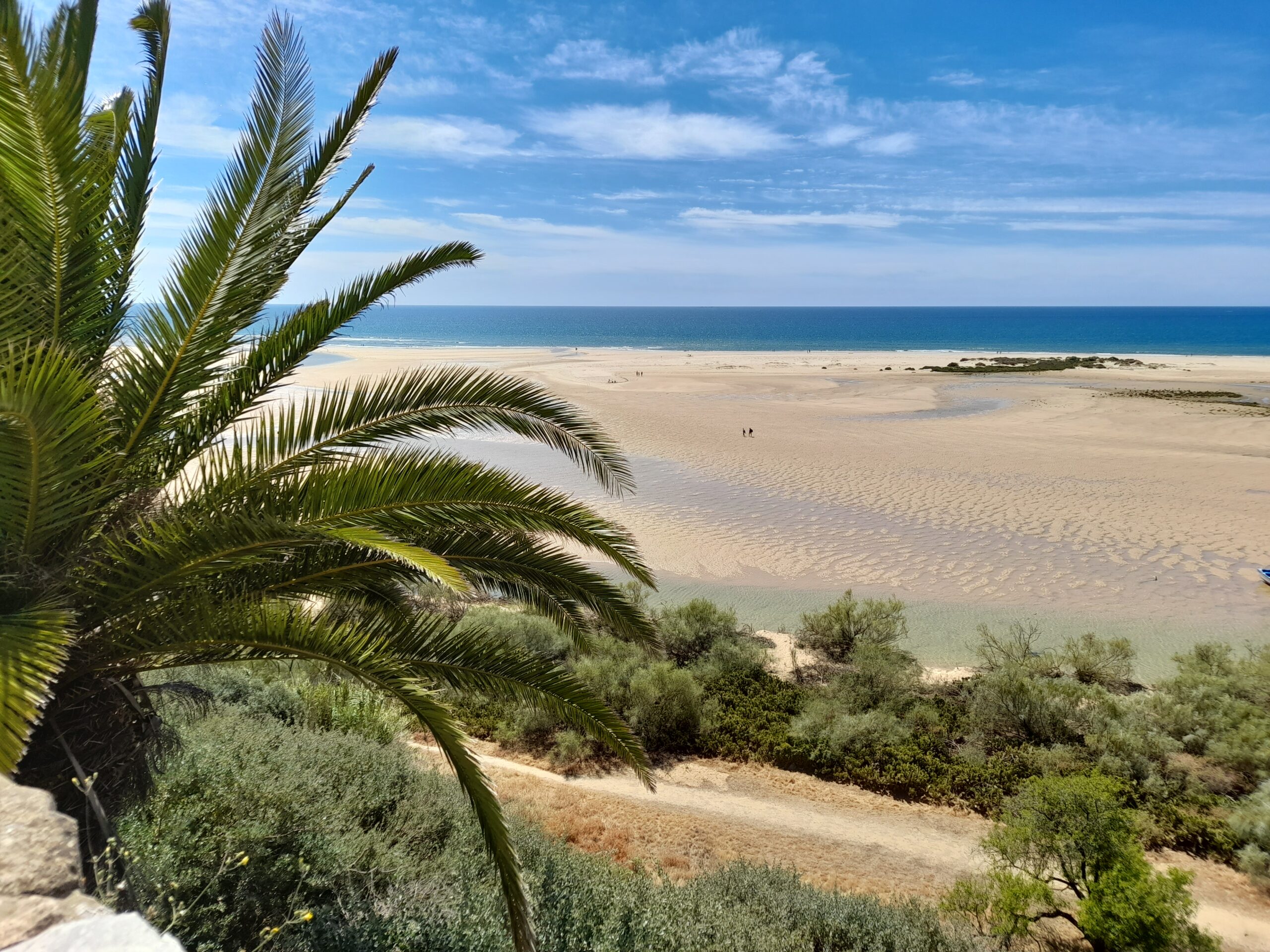
Cacela Velha is one of the Algarve’s tiniest and best-preserved villages, and it has the most amazing view of the Ria Formosa Natural Park.
The village is a must-stop. It’s a delightful and scenic little place, with just a small church, about a dozen houses, an 18th-century fort, and a wonderful panoramic view over the beach. It’s so small, that walking around all of its cobbled streets would take you just about 15 minutes.
The church is called Igreja Matriz de Cacela Velha and originates from 1583. It was damaged by the earthquake in 1755. Behind it is the fort (Fortaleza de Cacela), built in 1770, over the ruins of a Moorish castle. It’s currently occupied by the National Guard, so it’s not open to the public.
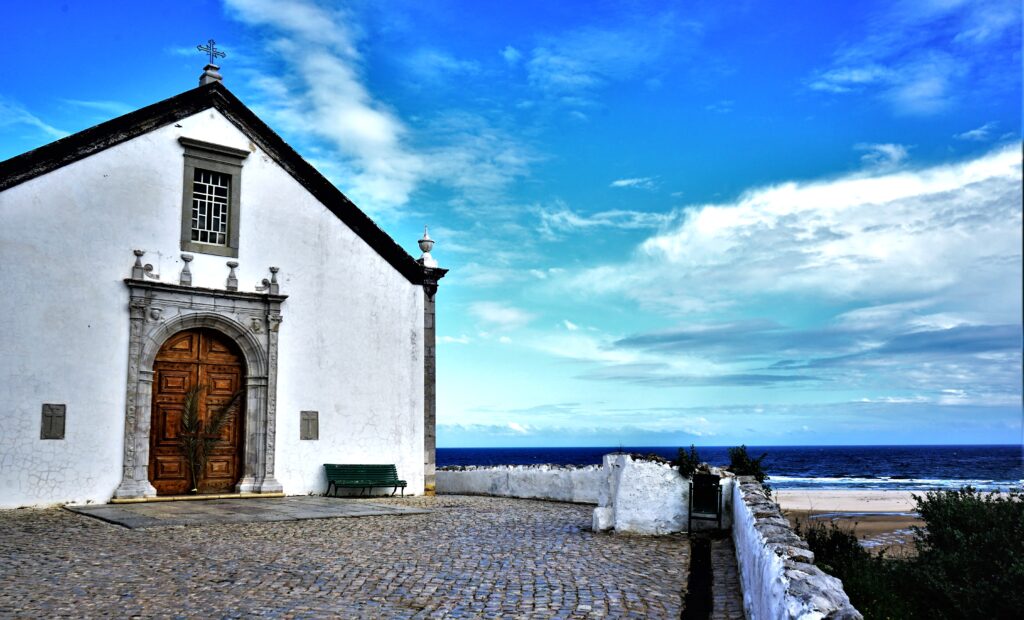
The beach is officially called Praia da Fábrica, but most people refer to it as Praia de Cacela Velha. The name Fábrica derives from a brick factory that existed on this site (to the west of the village) in the 19th century. Very few people live here, but there are a few villas and mansions where the factory once stood. One of them (Quinta do Muro) belongs to Claude Picasso (the son of the famous artist) and another was rumored to have been built by Teresa Heinz-Kerry, the Portuguese-American wife of former US Presidential candidate John Kerry.
This beach is located on an island that is part of the Ria Formosa Natural Park and is one of six islands in the Algarve. It’s accessed by boat from the Fábrica side (in the summer) or by walking across the wetlands from the village at low tide. There’s a wonderful view over the beach from the village, where you’ll understand why travelers have fallen in love with it. The editors of the Spanish edition of Condé Nast Traveler magazine say this is one of the best beaches in the world and The Guardian placed it on the list of the top 10 European beaches by foot.
It stretches for close to 2 kilometers (over one mile) and is different every time you go, due to the tides. It’s wider in the east, and tidal pools and lagoons are sometimes formed at low tide.
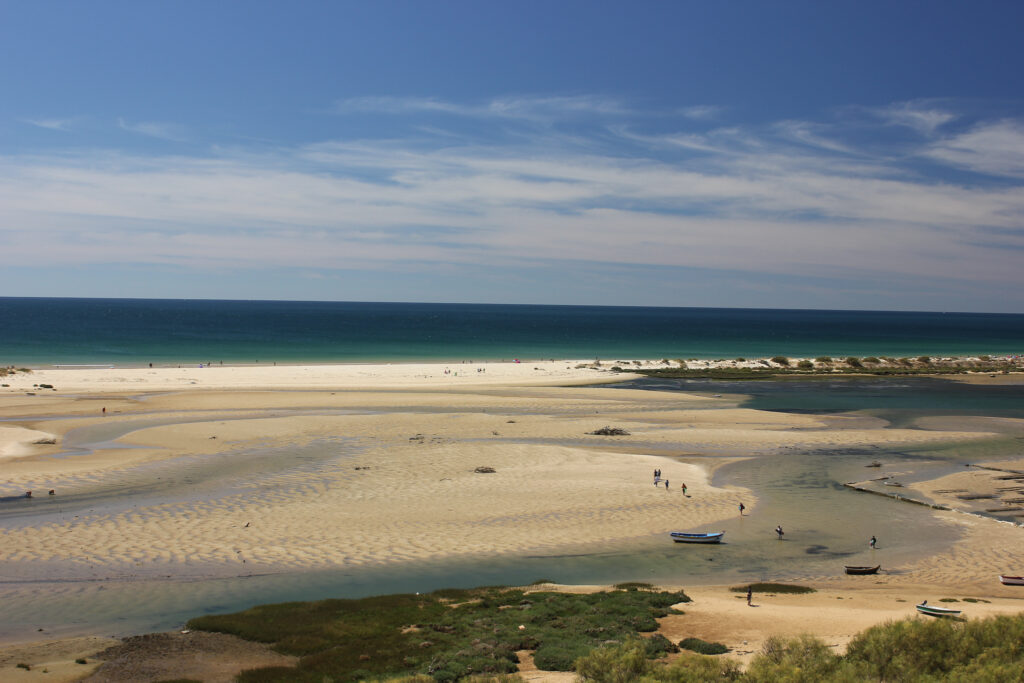
Both the village and the beach are often visited from Tavira and are also popular destinations for Spanish tourists. Still, the beach is surprisingly never crowded, so you will always have a peaceful and calm atmosphere. It’s mostly frequented by families since the calm and shallow water is safe for children. The average water temperature is a little higher than elsewhere in Algarve, so it’s good for swimming.
The beach has lifeguard supervision and parasols and sunbeds for rent. There are no restaurants here, but there are some in the village.
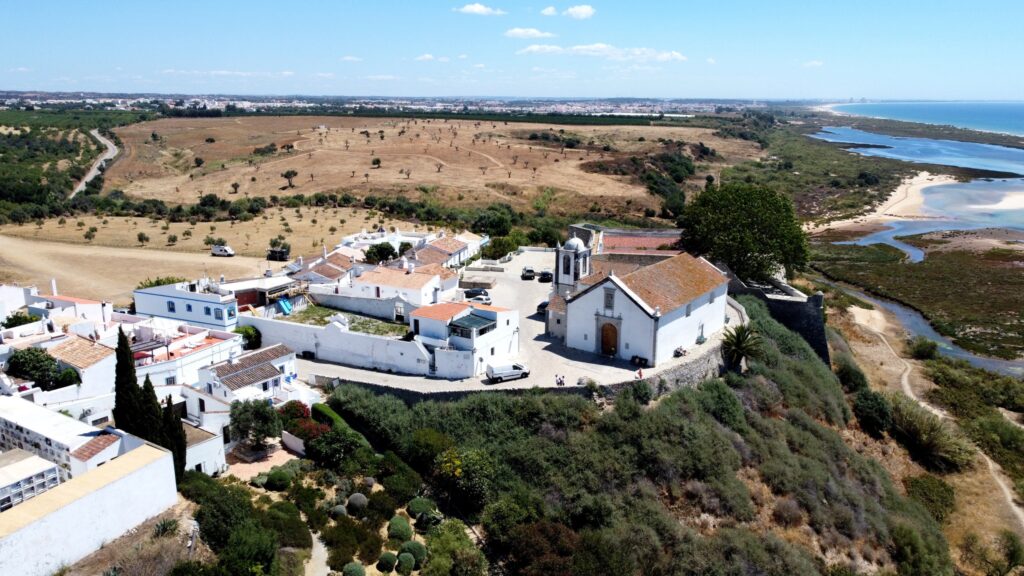
The village is a must-stop. It’s a delightful and scenic little place, with just a small church, about a dozen houses, an 18th-century fort, and a wonderful panoramic view over the beach. It’s so small, that walking around all of its cobbled streets would take you just about 15 minutes.
The church is called Igreja Matriz de Cacela Velha and originates from 1583. It was damaged by the earthquake in 1755. Behind it is the fort (Fortaleza de Cacela), built in 1770, over the ruins of a Moorish castle. It’s currently occupied by the National Guard, so it’s not open to the public.
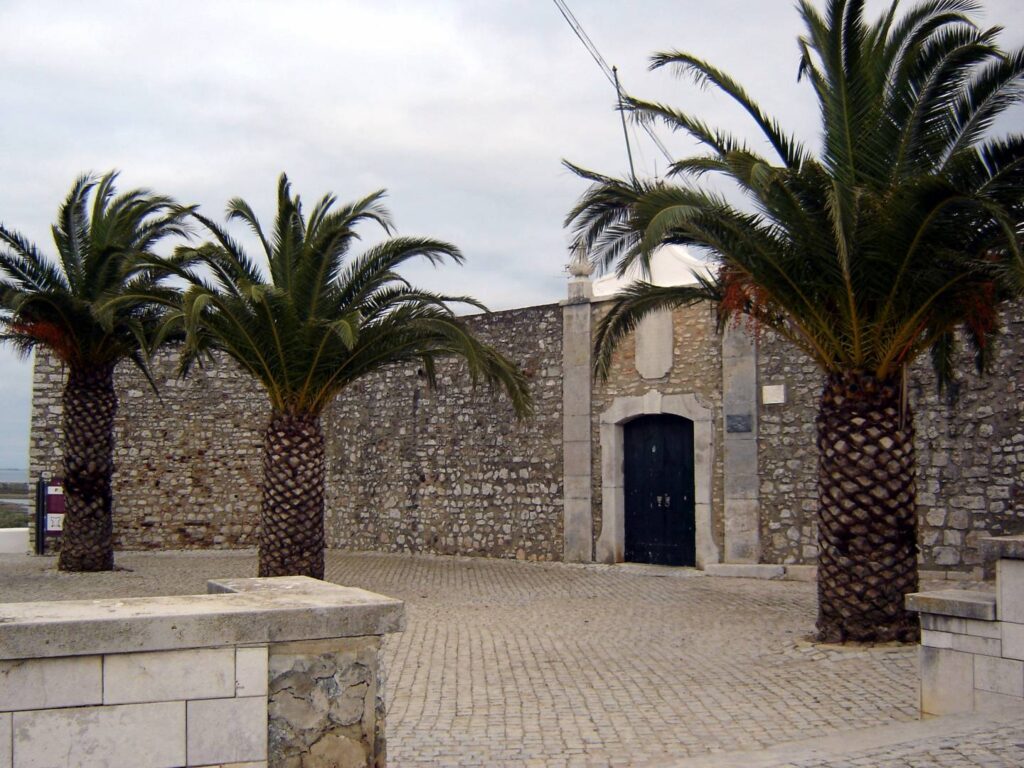
How to get to Cacela Velha
The Vamus bus n°67 operates between Faro and Vila Real de Santo António, stopping in different locations on the way, including Cacela Velha. From Faro, it takes 1 hour and 15 minutes. The stop is on a road where you see a sign pointing to the village, and from there you need to walk straight ahead for about 15 minutes.
By car it’s also just 15 minutes from Tavira, heading east on road N125. From Faro is about 45 minutes on Highway A22 and then road N125. You’ll see a large parking lot right by the village.
There’s a train serving in the area, but the station named “Cacela” is about 4 kilometers (2.5 miles) from the village. That means you’d have to walk for about 45 minutes or be lucky to find a taxi nearby.
In the village, there’s a small parking lot but go early or you’ll find it full.
Once at the village, walking through the water to the beach on the island can take between 5 and 10 minutes. Normally the water is very shallow, rarely going beyond knee-deep. The deepest it can get is about chest level, but on those days most people choose the boat instead. There are no scheduled times for the boat departures. They depart when there are passengers. They take less than 5 minutes to reach the beach.








